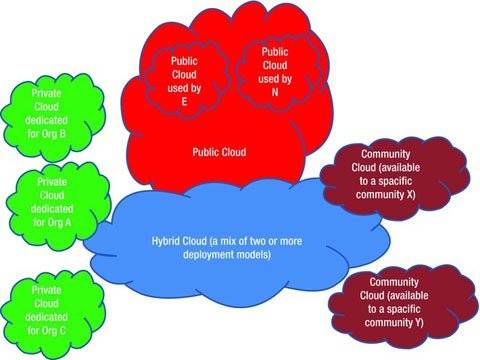Technology plays a strategic role in the success of any organisation. Whether you’re part of an enterprise with thousands of employees across the globe or running a startup from the garage of your home, the success of the business comes down to how you consume technology.
However, it’s not that straightforward, and IT decision makers usually have to make a lot of trade-offs when investing in technology. It’s very common to hear phrases like “We would like to implement this solution… but we don’t have the budgets” or “we don’t have the knowledge and skills” or maybe “it doesn’t work well with our environment”.
Why
is the private cloud more economical?
If you need to use a cab a few times every month, this works just fine. It fulfils your needs and gets you to your destination conveniently. If you need to use a cab everyday, then it becomes very expensive. In that case, you might start thinking about renting a car instead. Then, you figure out that this might be your new lifestyle for the next 2 years. Rental over the next 2 years is going to cost you more than buying a brand new car. This is when you have to make the uneasy decision: should I invest upfront and buy a $ 20K car or should I stay with an $ 850 monthly rental that is easier to pay? For financial experts, that’s an easy go. They will tell you that by buying the car, you’re saving over 50% of your transportation costs over the next 2 years! Even after adding additional costs such as vehicle licensing fees and insurance costs, you will still have an asset valued at 60% to 70% of its original price after 2 years of use.
IT investments work the same exact way. If you have a long term strategy to use and scale your IT systems, then DIY! In other words, you might benefit from investing in a private cloud if you want to cut down costs in the long term. Building the right strategy will optimise your operational costs in the long run and give you the flexibility you need to adapt to future needs.
Cloud transformation – firefighting or innovating?
It might sound too cliche, but with great power comes great responsibility! I like to think of it this way – everything has a cost. When you invest in cutting edge IT (the power), there is always a clear business objective that you’re looking to achieve. Besides the financial cost of that investment, a layer of complexity is added to your IT (the responsibility). The resulting technical debt can manifest in several ways:
- Cost overrun – the complexity requires more budget to maintain your IT systems, leaving less of your budget for strategic initiatives.
- Lack of business focus – focus shifts from strategy and long term goals to operations and firefighting.
- Non-strategic hiring & training – the new technology might require hiring niche skills that are expensive and difficult to find. Additional training of your IT staff might be required to keep the lights on.
- Slow time-to-market – it might take a longer time for your team to gain the confidence to get your workloads in production.
That is exactly how the public cloud changed the game! You got those challenges – hyperscalers will help you solve them, of course at a cost. They allowed for fractional consumption and enabled organisations to offload the complexity (responsibility). This model is very successful for some use cases, and a financial dilemma for others. So, if you’re a decision maker, what are your options if the public cloud is not well suited for you?
Building business-centric private clouds
The promise of the cloud transformation was to cut down operating costs of IT infrastructure and increase innovation. However, this was not the case for most, whether on the public or private cloud. Running your IT on the long term and at scale is expensive on the public cloud. Yet, the day-2 operations of the private cloud creates unavoidable friction. Deloitte’s CIO Insider report shows that organisations spend an average of 55% of their IT budgets on operations, leaving the smaller portion of their budgets for digital transformation and innovation. So how can an organisation replicate the public-cloud like experience in a private cloud without the exploding economics?
In the Private Cloud vs Managed Cloud: Cost Analysis whitepaper, we break down all the challenges and costs associated with the private cloud and discuss how shifting to managed services can help you cut down the high costs of operations and focus on driving a successful business.
Learn more about running efficient operations
Download the whitepaper “Private Cloud vs Managed Cloud: Cost Analysis whitepaper”
Watch our webinar “How to manage risks with the top 1% managed service providers”
Visit our website to learn more about our portfolio of managed services
Discover more from Ubuntu-Server.com
Subscribe to get the latest posts sent to your email.



